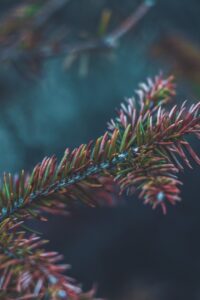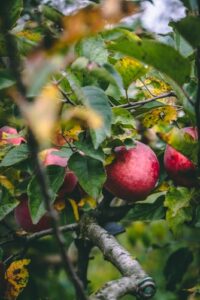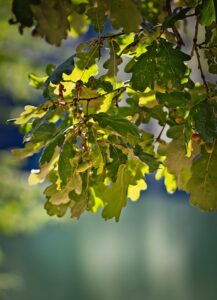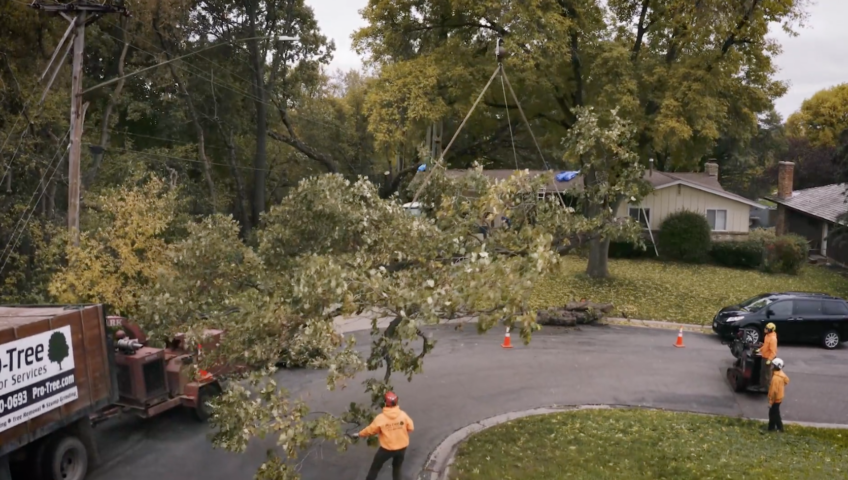The greater Twin Cities, MN area is home to over 24 varieties of trees. These trees are known for filtering our city’s air, providing shade and shelter, creating beautiful scenery, and so many other wonderful benefits. With 31.5 percent tree canopy coverage in the Twin Cities area, this means that wherever we go, we can experience the many benefits of these trees of all sizes and varieties.
While there are many different kinds of trees in the area, there are unfortunately many different kinds of tree diseases as well. Here is a look at a few of them which impact our area.
Tree Diseases in Minnesota
Although there are many types of tree diseases which affect a different variety of tree species, Minnesota has five major diseases affecting its tree populations. Here they are:
 Rhizosphaera Needle Cast
Rhizosphaera Needle Cast
Cause: The fungal infection, Rhizosphaera kalkhoffii, affects spruce trees. Trees that are stressed, for instance by drought, are more susceptible.
Symptoms: In the late winter or early spring, needles will turn brown or a shade of purple-brown. In mid-summer, these needles will fall off. Each of the needles will have black spots in a clear row, these are the fungus spores. This will usually affect lower branches and work its way up the tree. If this occurs for several years in a row, the branch will die.
Treatment: This fungus will not typically kill the tree, but the needles will be sparse. Tree disease treatments for this type of infection include watering during periods of drought, mulching around the base of the trees, and applying a fungicide via spray.
Diplodia Blight
Cause: One of two types of fungus, diplodia pinea or D. scrobiculata, affects 2 or 3 needle pine trees. This fungus thrives in stressed or weakened pine trees. The fungus overwinters in dead needles, pinecones, or branches. In the spring the spores are carried by the wind or animals.
Symptoms: This fungus kills the needles at the tips of branches. All of the new shoots in a growing season will be killed. Any new needles on mature branches will appear to be stunted. These needles will turn tan or brown and fall off.
Treatment: During dry weather, diseased limbs can be pruned. Any infected dead needles or cones need to also be removed. It is important to disinfect the shears after each cut to reduce the chance of reinfection. Chemical fungicides can also be applied to the tree to kill the fungus. In most cases with proper intervention, the tree can be saved.
 Apple Scab
Apple Scab
Cause: A common fungal infection, Venturia inaequalis, affects apple and crabapple trees. This disease infects both the leaves and the fruit.
Symptoms: The affected trees will have olive-brown spots on their leaves, these spots are almost fuzzy in texture. The spots will grow larger over time and cause the entire leaf to turn yellow or brown. These leaves will drop by mid-summer. The fruit will have similar olive-brown spotting. If the fruit has been infected early on it can also become hard or cracked.
Treatment: Anti-fungal treatments can be applied to the leaves of the tree to prevent further infection. It is important to remove dead or dying leaves from the base of the tree. Another solution to the issue is simply to plant new apple scab-resistant varieties of these trees.
Dutch Elm Disease
Cause: An invasive fungus, ophiostoma novo-ulmi, is able to affect all Minnesota native elm trees. It is spread primarily through elm bark beetles.
Symptoms: The primary symptoms are yellowing and wilted leaves, beginning at the outer crown and then working their way towards the trunk
Treatment: If caught early, the affected limbs can be pruned and the tree protected by fungicides. Tree grafts from resistant species can provide additional protection. If the infection is advanced, it will result in tree death and the entire tree will need to be cut down by a professional tree removal company.
 Oak Wilt
Oak Wilt
Cause: A non-native invasive fungus, Ceratocystis fagacearum, is capable of affecting all oak species native to Minnesota. The fungus invades the water-conducting vessels of the tree, eventually causing tree death. It is spread via sap beetles or through intertwined root systems.
Symptoms: Leaves will begin to turn a reddish-brown beginning from the outer leaf. The leaves will begin to wilt, starting at the outer canopy and working their way inside. Young trees can die within two months of being infected, while older trees can survive for up to 20 years depending on the strength of the tree.
Treatment: Methods of treatment for this type of tree disease is root cutting, using fungicides on important trees, or removing severely affecting trees to prevent further spread.
Trusted Tree Care Experts In Twin Cities, MN
If you are concerned about protecting a tree on your property or are in need of a tree health care services, contact the experts at Pro-Tree Outdoor Services. With over a decade of experience serving the greater Twin Cities area, they can help keep your trees healthy for many years to come.


Write a Comment